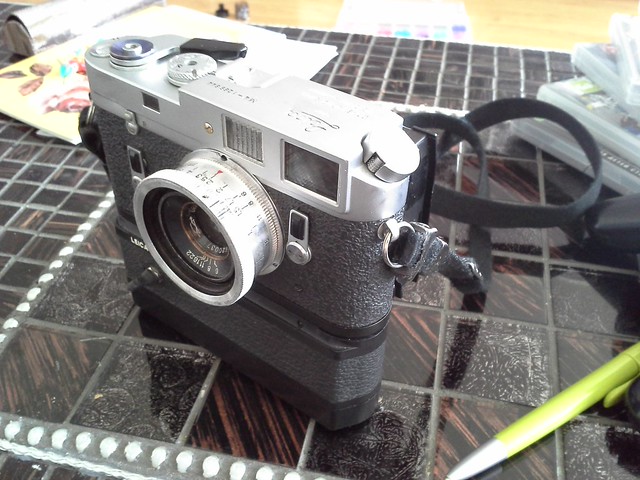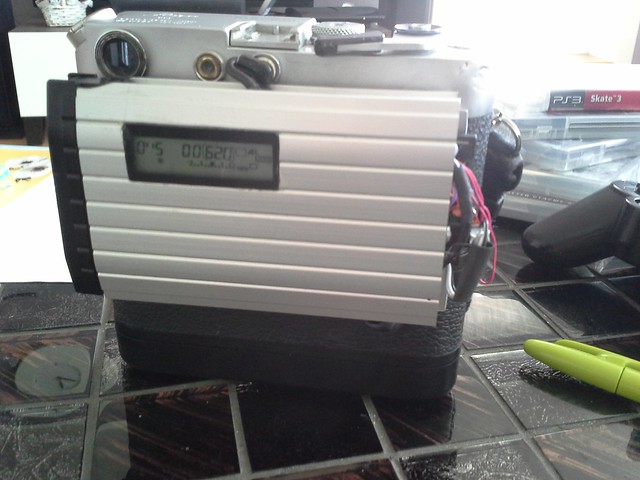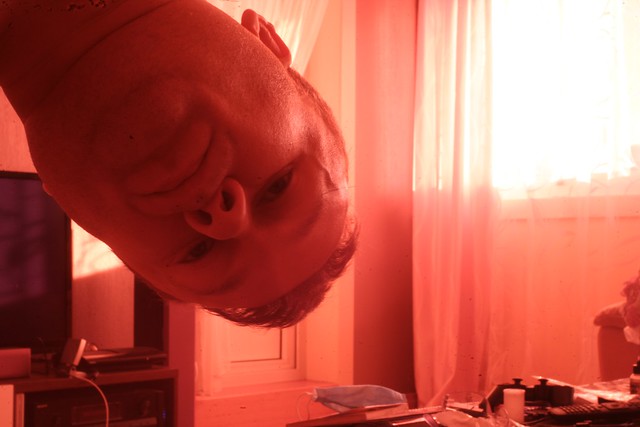V
varjag
Guest
One of slow-paced projects of mine, started over a year ago. This is a digital back for older Leica Ms not requiring body modification. The donor was 350D, as this was what I had at hand.

Digital Modul M by varjagg, on Flickr

Digital Modul M by varjagg, on Flickr

Digital Modul M by varjagg, on Flickr
I reused Leica Winder chassis for battery and control circuit housing.

Digital Modul M by varjagg, on Flickr
The sensor assembly and the original Canon's PCB sits in the housing made from a discarded ISDN adapter, some sheet steel and a donor Leica backdoor:

Digital Modul M by varjagg, on Flickr
The sensor didn't readily fit onto the rails: the enclosure had to be ground down to get the right register. The operations were controlled with DTI and a set of gauge blocks.

Ground down CCD by varjagg, on Flickr
Just to put to the rest the old discussion of what the flange to film rail distance is, it is 27.60mm:

Leica Register Distance by varjagg, on Flickr
17.60mm on the depth gauge + 10.000mm gauge block.
I had to simulate the missing shutter and mirror box sensorics for the 350D circuitry. The original Rebel function was first analyzed with 8-channel logic probe:

Canon 350D actuation cycle by varjagg, on Flickr
Then the software was written to simulate it on Arduino MiniPro. The Arduino was mounted on a custom control PCB.
Source code and schematics, as well as some random photos along the build are available at the project's page:
https://github.com/varjagg/digital-modul-m
If you want to repeat that, have my blessing :angel:
Shutter synch is done via the bulb flash socket. Unfortunately, the 350D is laggy as hell and the advance time of bulb flash was not sufficient. So the back functions now only up to 1/8 speeds.
The second limitation is the IR cut-off filter from the sensor had to be removed, as it otherwise obstructed the shutter. Thus the photos leave the M8's IR issues in the dust 🙂 I however ordered IVUR cut-off filters which I hope would eliminate the problem.

Digital Modul M test by varjagg, on Flickr

Digital Modul M by varjagg, on Flickr

Digital Modul M by varjagg, on Flickr

Digital Modul M by varjagg, on Flickr

Digital Modul M by varjagg, on Flickr
I reused Leica Winder chassis for battery and control circuit housing.

Digital Modul M by varjagg, on Flickr
The sensor assembly and the original Canon's PCB sits in the housing made from a discarded ISDN adapter, some sheet steel and a donor Leica backdoor:

Digital Modul M by varjagg, on Flickr
The sensor didn't readily fit onto the rails: the enclosure had to be ground down to get the right register. The operations were controlled with DTI and a set of gauge blocks.

Ground down CCD by varjagg, on Flickr
Just to put to the rest the old discussion of what the flange to film rail distance is, it is 27.60mm:

Leica Register Distance by varjagg, on Flickr
17.60mm on the depth gauge + 10.000mm gauge block.
I had to simulate the missing shutter and mirror box sensorics for the 350D circuitry. The original Rebel function was first analyzed with 8-channel logic probe:

Canon 350D actuation cycle by varjagg, on Flickr
Then the software was written to simulate it on Arduino MiniPro. The Arduino was mounted on a custom control PCB.
Source code and schematics, as well as some random photos along the build are available at the project's page:
https://github.com/varjagg/digital-modul-m
If you want to repeat that, have my blessing :angel:
Shutter synch is done via the bulb flash socket. Unfortunately, the 350D is laggy as hell and the advance time of bulb flash was not sufficient. So the back functions now only up to 1/8 speeds.
The second limitation is the IR cut-off filter from the sensor had to be removed, as it otherwise obstructed the shutter. Thus the photos leave the M8's IR issues in the dust 🙂 I however ordered IVUR cut-off filters which I hope would eliminate the problem.

Digital Modul M test by varjagg, on Flickr

Digital Modul M by varjagg, on Flickr







